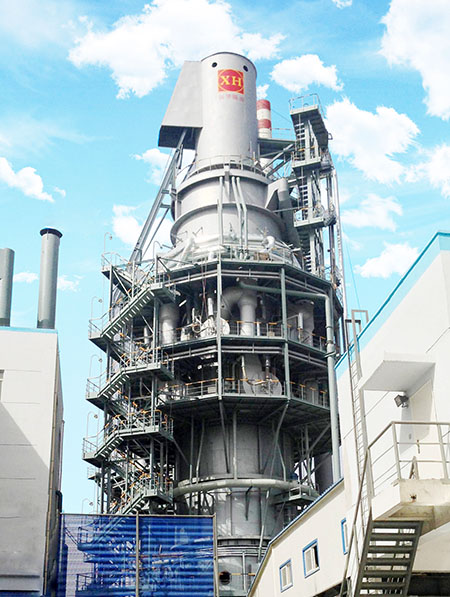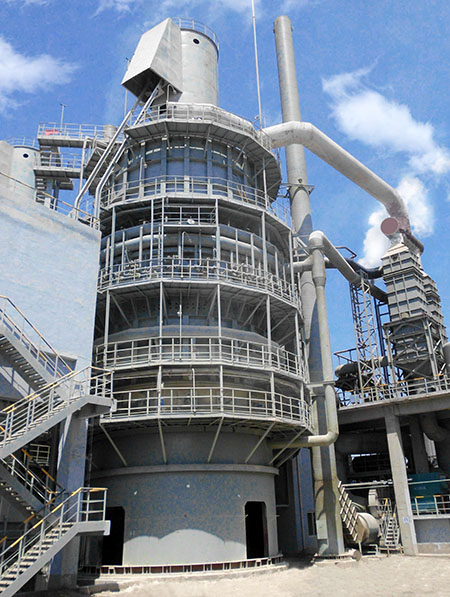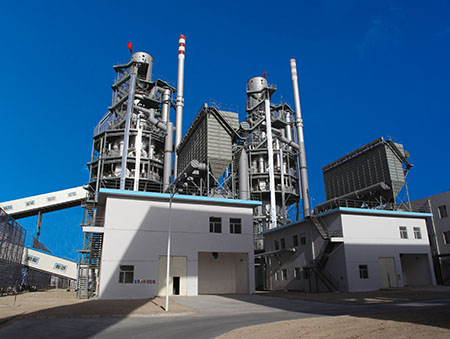Annular sleeve kiln has the characteristics of low heat consumption, high lime activity, simple structure, and strong fuel adaptability. Compared with traditional lime kilns, lime is calcined in the annular space and the air flow is more evenly distributed. There is no cooling equipment in the kiln. Low failure rate and easy maintenance. It is suitable for the use of coke oven gas in the iron and steel industry, and the use of calcium carbide furnace tail gas in the chemical industry to produce high-quality lime. The automatic control is completed to achieve the purpose of improving the quality of lime and saving energy, thereby calcining high-quality active lime.


1. Technical characteristics of annular sleeve kiln:
1. Production capacity: Our company provides the design and manufacture of 150t/d, 300t/d, 500t/d, and 600t/d annular sleeve kilns. The production capacity can be adjusted within a certain range, and stable production can be achieved without affecting Quality and consumption indicators.
2. Limestone particle size: 20~100mm, the size range ratio is 1:3.
3. Fuel type: The kiln can use natural gas, coke oven gas, calcium carbide furnace tail gas, fuel oil, etc. as fuel.
4. Lime products: The residual amount of CO2 can be no more than 2% (24-hour average), and the activity is greater than 360ml (4N, 10 minutes by HCL method).
5. Heat consumption: Maximize the use of heat energy. The hot air for cooling lime and inner sleeve and part of the flue gas produced by combustion are sent to the calcining belt to circulate through the ejector. Under normal operation and nominal output conditions, the heat of the finished ash The consumption is not higher than 930kcal/kg.
6. High operating rate: continuous operation for 48 weeks per year.
7. Calcining method: the combination of countercurrent calcination and parallel calcination will not over-burn the lime, and can ensure the full decomposition of the lime, which greatly improves the activity of the lime.


2. Structural features and process description:
1. The sleeve kiln is composed of inner and outer cylinders. The inner cylinder and the outer cylinder are arranged concentrically to form an annular space in which limestone is calcined. From top to bottom, the kiln body is divided into preheating zone, countercurrent calcining zone, cocurrent calcining zone and cooling zone.
a). The exhaust gas outlet from the lower air inlet of the upper inner sleeve to the upper part of the sleeve kiln is a preheating zone, and 70% of the waste gas after calcination passes through the preheating zone to preheat the stones.
b). A significant feature of limestone calcination in a sleeve kiln is that countercurrent calcination and parallel calcination are carried out at the same time. The two-layer combustion chamber distributed on the shell of the sleeve kiln divides the kiln body into two counter-current calcination zones and one parallel-current calcination zone. From the upper combustion chamber to the upper end of the lower inner sleeve, and from the upper combustion chamber to the lower combustion chamber are two countercurrent calcination zones, and from the lower combustion chamber to the bottom of the lower inner cylinder are the downstream calcination zones.
c) Insufficient air supply for incomplete combustion in the upper combustion chamber. Only about 50%. Under the action of the exhaust gas induced draft fan, the incomplete combustion flue gas enters the upper material layer and meets the airflow containing excess air from below, so that the incomplete combustion products are completely burned. This area is the upper calcining zone. In this area, the direction of airflow is opposite to the direction of material flow. During countercurrent calcination, limestone needs to absorb a lot of heat in the initial stage of decomposition. Therefore, there is generally no over-burning phenomenon.
d) The lower combustion chamber is completely combusted, and the high-temperature flue gas (temperature <1350℃) produced by the combustion in the lower combustion chamber is divided into two streams: one stream flows to the top of the kiln through the middle calcining belt and the upper calcining belt and the incomplete gas from the upper combustion chamber Combustion gas meets: Another gas flow goes down under the action of the ejector of the lower combustion chamber to form a co-current calcination zone.
2. Parallel calcination is the key to the entire calcination process of the sleeve kiln. Lime is finally sintered in this area. The high-temperature flue gas passes through the material bed to calcinate lime, and then enters the lower inner cylinder from the evenly distributed circulating gas inlet at the bottom of the lower inner cylinder: cooling air is sucked into the kiln from the bottom, and is preheated by the high-temperature lime from the lower inner cylinder together with the high-temperature flue gas The entrance enters into the lower inner cylinder. After the two air streams are mixed, it is called circulating gas (which contains excess air that can be used as secondary air for combustion), and the temperature is generally 800-900°C. The circulating gas passes through the inlet of the lower inner cylinder → the ejector at the top of the lower inner cylinder → the material layer of the lower combustion chamber → the inlet of the lower inner cylinder, and so on.
3. In the co-current calcination zone. As the material flows downward, a CaO shell is gradually formed on the surface of the limestone, and its heat absorption becomes worse, but at this time the more lean fuel and air are in contact and combusted. The heat supply is relatively mild, so the CaO shell will not be over-burned, and the green core can continue to decompose.
4. The inner sleeve is divided into upper and lower two, the upper inner cylinder is hung on the top of the kiln, and the lower inner cylinder is located in the middle and lower part of the entire shaft kiln. The upper and lower inner cylinders are made of boiler steel plates. There are two layers. An annular gap is formed between the two layers. The annular gap is forced to cool by air. The inner and outer sides of the inner cylinder are built with refractory materials. The refractory materials are mainly magnesium-aluminum spinel. Bricks, high-purity mullite, high-alumina bricks, clay bricks, high-density clay bricks, etc., are selected according to the working conditions of the masonry parts.
5. Through the above design, the pressure, airflow and temperature in the kiln are evenly distributed in the annular section and the entire limestone material layer, ensuring the uniformity of limestone roasting, improving the quality of the product, and reducing the unit consumption of the product at the same time. Compared with lime kilns, the equipment is more adaptable to raw materials.








